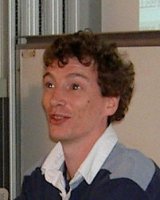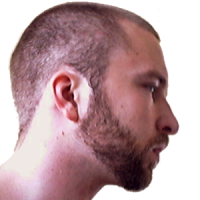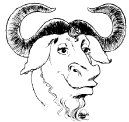GIMP Developers Conference 2004
The GIMP Developers Conference 2004 was held as a sub-event of GUADEC 5 in Kristiansand, Norway, on the 28th, 29th and 30th of June.
GIMP related talks at GUADEC
Programming a GIMP Plug-in — Dave Neary

Dave Neary
Dave Neary’s been hanging around free software for about 6 years. He started off as a leech, and then decided to turn into a leechee sometime around 1999, when he started working on the GIMP. His main interest in the GIMP is revitalising the relationship betweek the user and developer communities. He has also helped out a little now and again on other things, and is listed as a co-author of gnect.
He is currently living and working in Lyon, France.
Custom widgets in GtkCairo — Øyvind Kolås

Øyvind Kolås
Øyvind is working on an application called Bauxite, which uses a node-based data structure similar to GEGL This application is both a standalone video editor and a comprehensive test bed of GEGL’s node structrues.
Øyvind is also working on the next generation XCF format.
His primary interests in the GIMP is graph compositing.
Other graphics talks at GUADEC
- Typography and graphic design for programmers —Liam Quin
- The future of rendering in GNOME — Owen Taylor
- GStreamer Internals — Benjamin Otte
- Digital Photography in a GNOME Environment — Hubert Figuiére
Sponsors
Many thanks to our generous sponsors, without whom GIMPCon would not be possible:

The Free Software Foundation
The Free Software Foundation has consistently been the greatest supporter of the GIMP project, and has been the primary sponsor of each of the three GIMP Conferences which we have held. Many thanks go out to RMS and everyone else at GNU.

MacGIMP
Mat Caughron sells the GIMP commercially with support and documentation, and has been generous on each occasion we have asked for his support.
The GIMP is also fortunate to have a community of supporters who
have donated smaller amounts to the project. Many thanks go out
to all those supporters. More information on how to donate to
the GIMP is available on
GIMP conference activities
The GIMP Developers Conference, also known as GIMPCon, is a gathering of GIMP and GEGL developers from all over the World. It is a vital opportunity for the GIMP developers to meet each other and discuss the direction which the software will take over the coming years.
There have been two GIMP Conferences previously, both in Berlin, and both graciously hosted by the CCC (the Chaos Computer Club), a much less chaotic bunch of guys than their name suggests.
The GIMP Developers Conference 2003

The People at GimpCon 2003
Last year’s GIMP Conference was a sub-event of the Chaos Communications Camp, a camping trip with broadband and laptops. During the camp, we discussed ways we could make the GIMP better both technically and as a community, which led up to the 2.0 release at the end of March.
At this year’s conference we will discuss, among other things,
- What we expect from a replacement for the PDB (Procedural Database)
- How we will integrate GEGL into the GIMP
- Managing plug-in distribution
- The GIMP’s organisation
The GIMP, Live!
Two of our resident graphics designers, Jakub Steiner (jimmac) and Tuomas Kuosmanen (tigert) are giving a user-day GIMP demonstration on Wednesday. Last year, jimmac presented a series of tutorials on basic GIMP techniques to a crowd of over 100 people, and held them captivated for nearly 3 hours.
This is an opportunity to see what the GIMP can do in the hands of professionals, and to pick up some tips for your own use. A spectacle not to be missed.
About the GIMP
Started in 1995 by Spencer Kimball and Peter Mattis, the GIMP has evolved into a mature and powerful application. The current release is version 2.0, which has major improvements over its predecessors in the user interface, making the GIMP more accessible for casual users as well as graphics professionals.

GIMP on the Mac OS X operating system
GIMP is expandable and extensible. It is designed to be augmented with plug-ins and extensions which allow access to its capabilties via a number of languages. The advanced scripting interface allows everything from the simplest task to the most complex image manipulation procedures to be easily scripted.
The software comes with lots of features, some are newly implemented and available with the 2.0 Release. A short list over the most interesting features are:
-
a full suite of tools for painting and image manipulation
-
preview of brush outline while you’re drawing
-
customizable interface using a drag-and-drop dockable
-
advanced scripting capabilities (Scheme, Python, Perl)
-
over 100 plug-ins available as standard
-
fullscreen mode and view filters
-
much, much more!